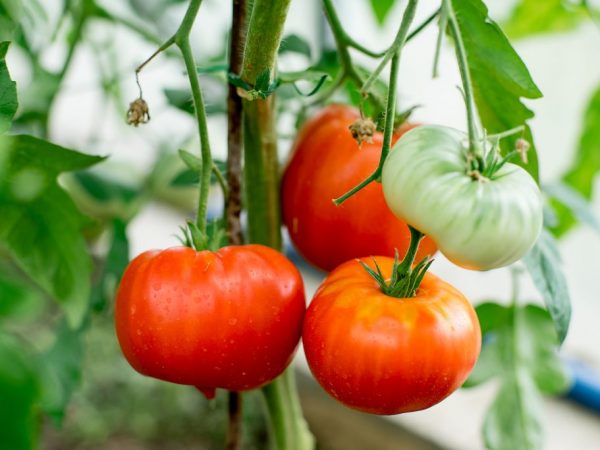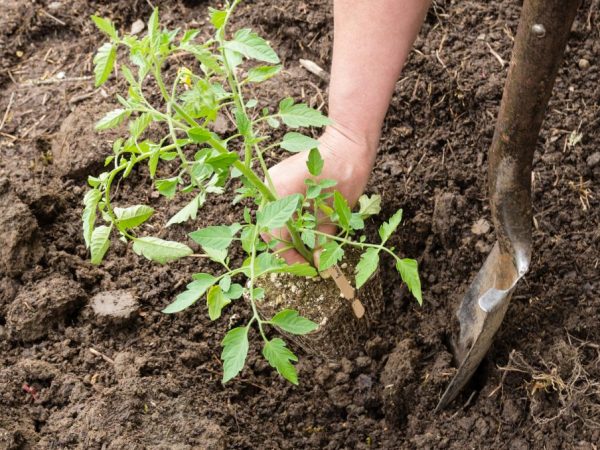Characteristics of the Mikado tomato variety
Tomatoes are a vegetable without which it is difficult to imagine modern cooking. In summer and autumn, it is consumed mainly fresh, in winter - canned salads, pickles, year-round - sauces, ketchups, juices. Tomatoes are appreciated for the properties and taste that are beneficial to the human body. Mikado tomatoes are one of the most popular varieties that have excellent consumer properties and have proven themselves well in regions with different climatic conditions.

Characteristics of the Mikado tomato variety
The intriguing variety name is of Japanese origin. Literally translated as "high gate". In the ancient Japanese tradition, this was the name of the emperor. It is believed that the variety got its name from the shape of a tomato that resembles an imperial crown.
Characteristics of varieties
Tomato Mikado, according to the description from manufacturers, refers to indeterminate (with unlimited stem growth) varieties. These are mid-ripening tomatoes, 110-115 days pass from planting to ripening of the first harvest. The variety is not a hybrid.
In fact, there are several varieties of the Mikado tomato cultivar that have a common name, but differ in the characteristics of the fruit, ripening time, plant height:
- Mikado pink;
- Mikado is red;
- Mikado is yellow;
- Mikado gold;
- Mikado black;
- Mikado Siberiko.
Experts note that only pink Mikado (2015) is included in the State Register of the Russian Federation. The origins of the other Mikado are unknown.
The variety is recommended for growing in film greenhouses. But the Mikado tomato, according to reviews, shows excellent results when cultivated in the open field, especially the red Mikado.
Description of the bush
The bush of Mikado tomatoes reaches a height of 1.5-2.5 m. The exception is Mikado red: in the open field the bushes are 80-100 cm high. Tall plants need support and tying up. Vegetable growers form it into 1-2 stems. The first brush is usually laid over the 9th leaf. And then it is formed every 2-3 leaves.
It is necessary to pinch the plant during cultivation in order to avoid thickening and get a good harvest. When a bush is formed into two stems, one stepson is left in front of the first flower brush, and all the rest are removed. Passion-picking is carried out about once a week.
The leaves of this variety have a characteristic shape and dark green color, which makes them look like a potato.
Description of fruits
The fruit of the Mikado series tomatoes is large, round, flattened, slightly ribbed. The exception is Siberiko berries: they are heart-shaped. Weight reaches 250-350 grams. With proper care, the formation of a bush, giant fruits weighing up to 600-800 grams are obtained. Under adverse weather conditions, improper watering, the vegetable may crack.
Mikado tomatoes are salad tomatoes, they are appreciated for their taste.
The color of the Mikado series tomatoes is different, information about it is contained in the name of the variety (Siberian fruits are red).The pulp is juicy, firm, sweetish. The yellow and orange color of the fruit indicates the content of a large amount of beta-carotene. The yield of the variety is average, 6-8 kg. from the bush. Plant seed producers advertise high yields for Mikado rosea and Siberico.

Fruits are valued for their taste.
Since the variety is large-fruited, tomatoes are mainly consumed fresh, for preparing salads, snacks, processed into juice, and sauces are prepared. Smaller fruits are used to prepare preparations for the whole winter.
Care features
Growing Mikado tomato occurs through seedlings. The optimum temperature for plant development is 20-25 gr. At low temperatures (less than 15 ° C), the growth of shoots stops, at high temperatures (more than 35 ° C), the ovary does not form.
Planting seeds
Sowing seeds for seedlings is carried out 60-65 days before the expected planting of plants in the ground. The seeds are usually specially prepared for planting. If they were stored in a cool place, then it is advisable to warm them up.
Before sowing, the seeds are processed. First, they are dipped in a linen bag in a pink solution of potassium permanganate for 15-20 minutes (you cannot overexpose so as not to burn). And then you can soak for 5 hours in a solution of wood ash (for its preparation, 1 tablespoon of ash is poured into 1 liter of warm water and insisted for a day). Such treatment not only prevents many diseases, but also saturates the seeds with microelements, ensuring good germination and vigorous growth.
For growing seedlings, soil mixtures purchased from specialized retail outlets are used, or they are prepared by themselves. It should be taken into account that light soils are suitable for tomatoes (the composition may include peat, humus, mullein, sand or sawdust). Seeds are sown in trays, special cassettes, ensuring good drainage.
Seedling care
For seed germination and the development of young plants, sunlight, temperature control and timely watering are needed. The first shoots appear 3-5 days after planting.
When two true leaves develop, it is necessary to dive in order to get high-quality seedlings. Young, strongest plants are transplanted into separate cups, while pinching the central root to form lateral roots and strengthen the root system.
Landing in the ground
A week before planting seedlings in the ground, gardeners are advised to treat it with Bordeaux liquid. It is also recommended to carry out hardening - to take out for a while in a cool room or ventilate the existing one well. Seedlings are ready for planting if 7-8 true leaves have formed.

Wells should be treated with a solution of potassium permanganate
Accommodation options can be different:
- planting according to the scheme 50x50 cm (2-3 plants per sq.m.) to ensure good ventilation and not lose the crop due to thickening;
- if the tomatoes are grown in one stem, then the distance between the plants can be reduced to 18-20 cm, and the row spacing can be made 100-120 cm wide.
Immediately before planting, the holes are spilled with a weak solution of potassium permanganate. A few lower leaves are removed from a young plant, leaving only 3-4 well-formed leaves. Part of the stem is buried in the soil, leaving only leaves on the surface.
In order to tie up the plants in a timely manner, it is necessary to use T-shaped supports on the beds, between which a wire is pulled, or individual supports (poles) for each bush.
Watering and fertilizing
Watering tomatoes is best done in the evening, avoiding water getting on the stem and leaves.
Watering frequency depends on weather conditions - 1-2 times a week. During the period of growth and fruit setting, watering should be abundant, and when the crop ripens, it should be minimal, in order to prevent cracking and preserve the taste of the tomatoes.
Tomatoes are demanding on soil fertility, so fertilizing with organic and mineral fertilizers should be regular. Usually fertilizers are applied 3-4 times a season. The first time is 10-12 days after transplanting. Further, it is recommended to repeat before flowering, with the appearance of the ovary and during the period of fruit pouring.
It is advisable to use organics prepared by yourself:
- fermented nettle infusion (1 bucket of nettle for 3 buckets of water);
- mullein solution (1 bucket of manure for 4 buckets of water is fermented for several days until most of the urea is removed);
- infusion of chicken droppings (take droppings and water in a ratio of 1/20, mix and leave in the open air for 10 days).
In addition, superphosphate, urea, and ash are added. In very hot weather, to stimulate the formation of an ovary, the bushes are treated with boric acid from a spray bottle.
Diseases and pests
According to the official description, the Mikado tomato is resistant to most diseases. Most often it is affected by late blight. This fungal infection usually occurs in cool, wet weather and is easily spread from plant to plant. Since late blight affects not only greens, but also fruits, the disease significantly reduces productivity. Disease prevention measures are carried out throughout the growing period.
For the prevention of late blight, you need:
- plant tomatoes in a sunny place where cold dew on the plant is minimized;
- provide good ventilation of the beds;
- weed and loosen the aisles in a timely manner;
- watering at the root.
The characteristics of the nightshade says that for the preventive purpose of planting tomatoes, they are systematically treated with Bordeaux liquid even at the seedling stage. Many fungicides have been developed to combat late blight. But gardeners recommend using home remedies that have no side effects for humans: infusion of garlic (200 grams of chopped cloves per liter of water, leave for 2-3 days), decoction of onion peels. Potassium permanganate solution, solutions with the addition of brilliant green or iodine are also used.
Conclusion
The description and reviews of the Mikado tomato are mostly rave. Summer residents and gardeners note that tomatoes taste great. It is recommended to grow different varieties of the line, but Mikado pink is considered the most profitable (the price of pink tomatoes on the market is usually higher).
To grow a good harvest of tomatoes, you need to stock up on quality seeds and follow the rules of agricultural technology.


